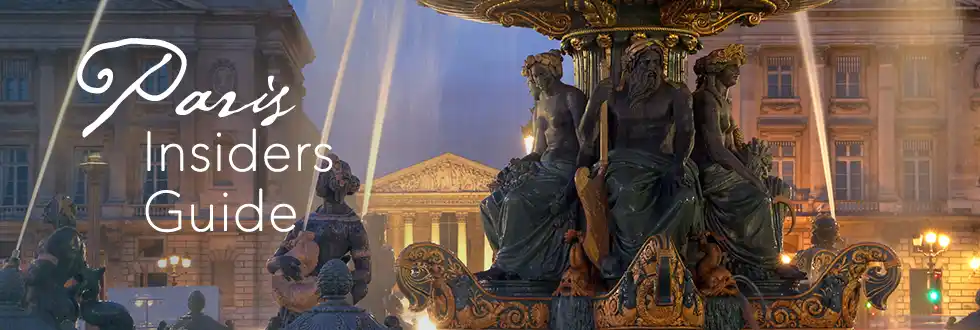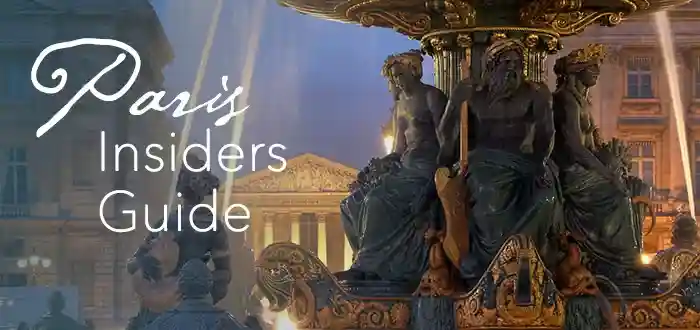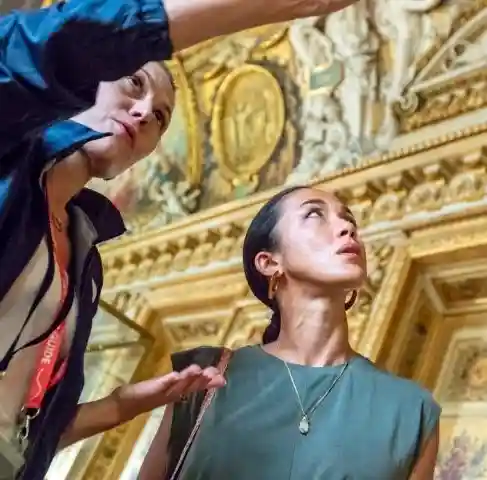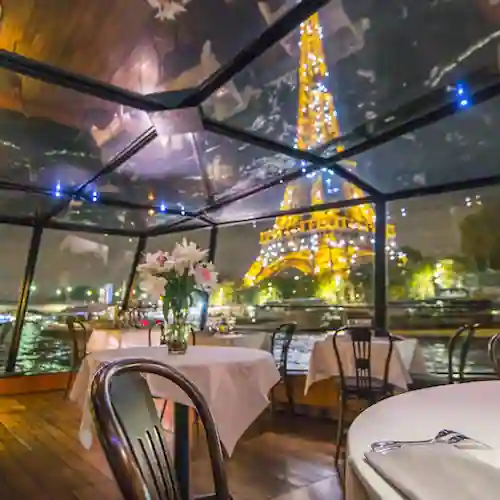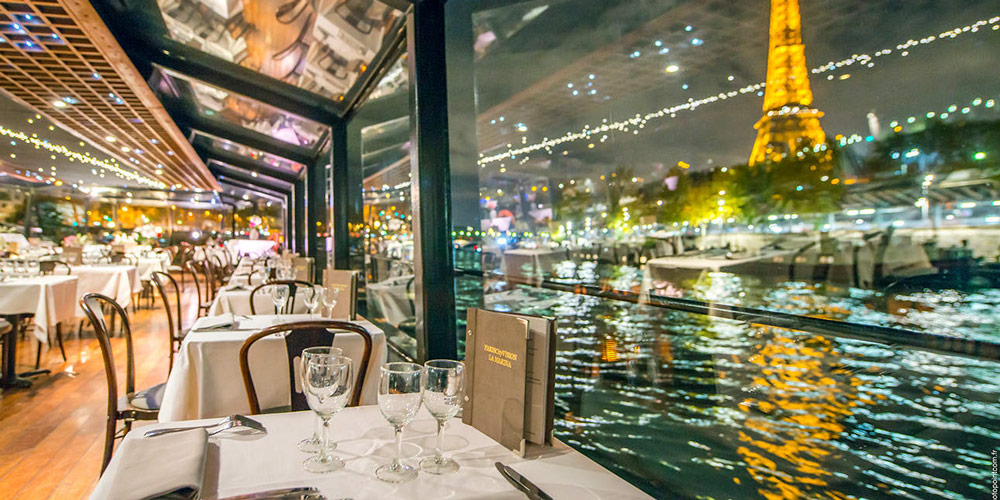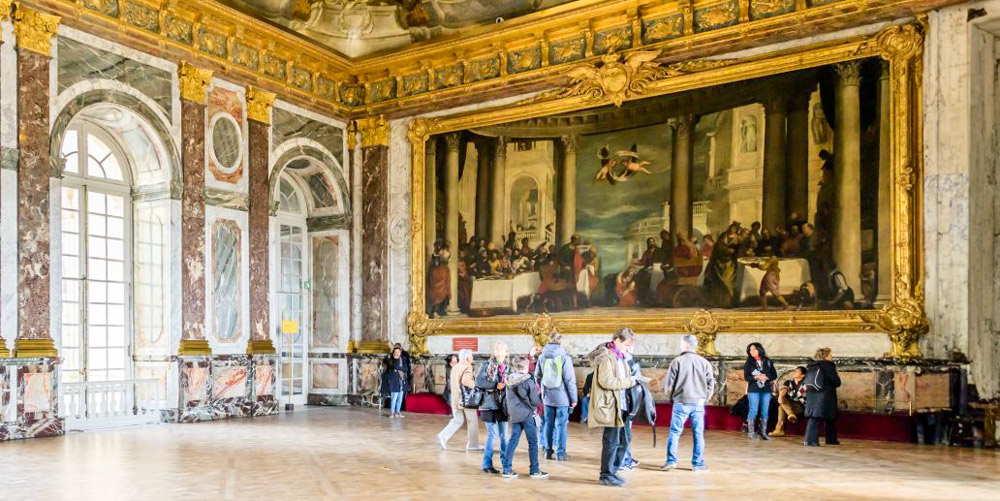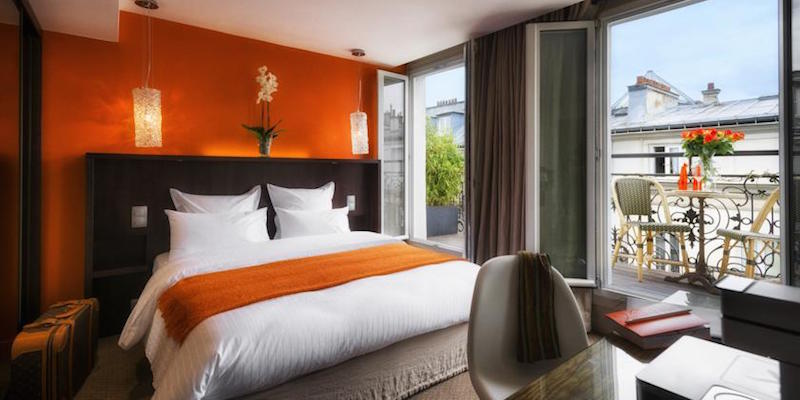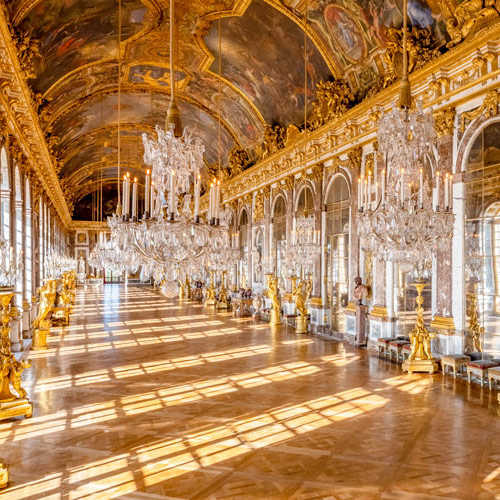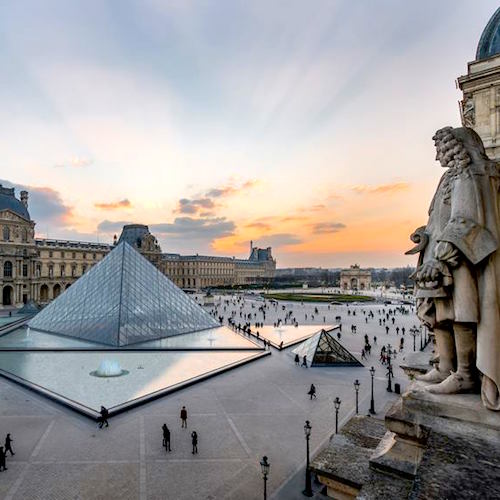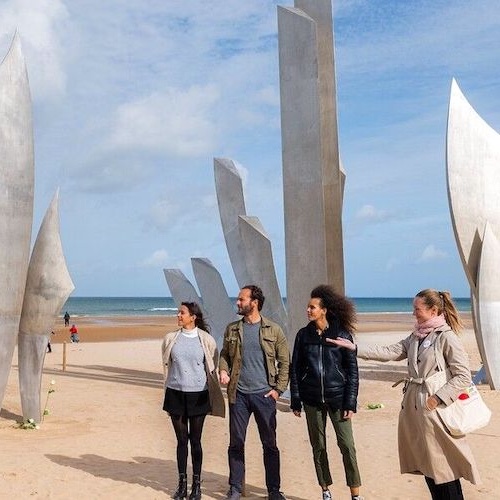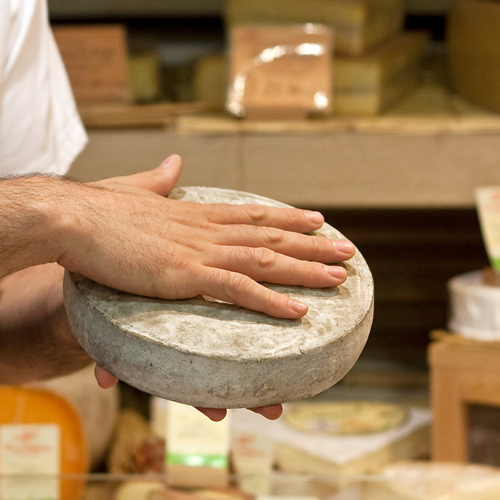Les Invalides In Paris – A Museum, A Monument, A Mausoleum
Museums, monuments, a mausoleum, a retirement home for soldiers, and a hospital for war veterans, Les Invalides in Paris is a rambling collection of buildings and courtyards dedicated to all things military. It's a must-see when you're in the 7th Arrondissement, either before or after a trip to the Eiffel Tower, or whenever you want to learn more about the fascinating military history of France.
![]()
Our Top-Rated Museum Tours in Paris
1. Les Invalides Semi-Private Tour… From Louis XIV to Napoleon to World War II
2. 3-Hour Louvre Semi-Private Tour… Feel like a VIP on a small group tour
3. Musée d'Orsay Impressionist Tour… The top-rated museum tour in Paris
4. The Paris Museum Pass… Free entry to over 60 museums and monuments
Napoleon's Resting Place
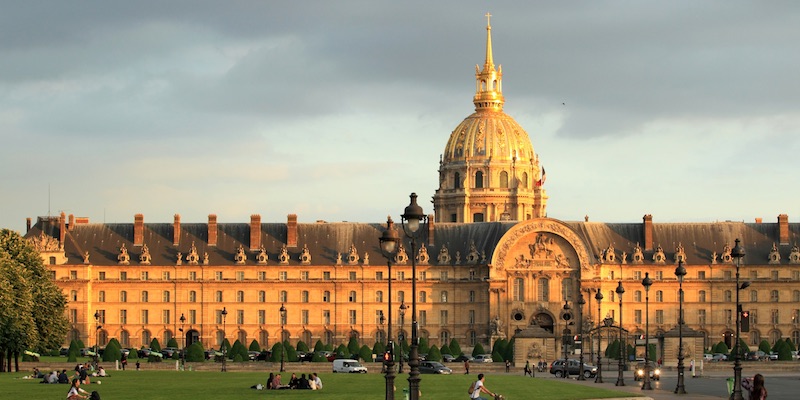 Les Invalides and the dome over Napoleon's Tomb glowing in the evening sun
Les Invalides and the dome over Napoleon's Tomb glowing in the evening sun
The star of the show, so to speak, is Napoleon himself. It's his tomb that's under the distinctive giant golden dome and his alma mater, the École Militaire is next door. Another neighbor, to the east, is the Musèe Rodin and its sumptuous gardens.
Within the Invalides complex is the Musée de l'Armée, the military museum of France. Plus, there's a museum dedicated to maps and a burial site for war heroes. Like many things in Paris, Hôpital des Invalides has a long and complicated history and many stories to tell. Let's delve deeper, starting at the beginning.
![]()
Discover What's On When You're Here...
• January... |
• February... |
• March... |
• April... |
• May... |
• June... |
• July... |
• August... |
• September... |
• October... |
• November... |
• December... |
Discover What's On When You're Here
• January...
|
• February... |
• March... |
|---|---|---|
• April... |
• May... |
• June... |
• July... |
• August... |
• September... |
• October... |
• November... |
• December... |
History of Les Invalides
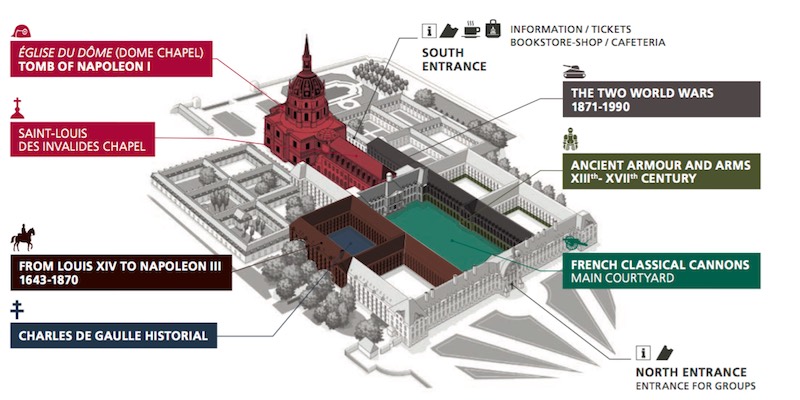 Plan of Les Invalides complex
Plan of Les Invalides complex
The story began in 1670. Louis XIV, the Sun King, ordered the construction of a retirement home for soldiers; its official name was Hôpital des Invalides. It's hard to imagine now, but at the time there was no safe haven for sick, old, or disabled soldiers. By the time Les Invalides was completed, the complex had fifteen courtyards, a gilt-domed chapel, and enough room for 4,000 residents.
A century later, on July 14, 1789, angry rioters stormed Les Invalides and gained control of the ammunition stored in the cellars. They stole the cannons and muskets and took to the streets, storming the Bastille. The rest, comme on dit, is French history.
![]()
|
Paris Dinner Cruises on the Seine Dine in style as you glide past the Eiffel Tower, Notre-Dame, and the Louvre on a magical Seine River cruise. Gourmet food, champagne, and Paris lit up at night – it’s unforgettable. |
|
Paris Dinner Cruises on the Seine Dine in style as you glide past the Eiffel Tower, Notre-Dame, and the Louvre on a magical Seine River cruise. Gourmet food, champagne, and Paris lit up at night – it’s unforgettable. |
What to See at Musée de l'Armée
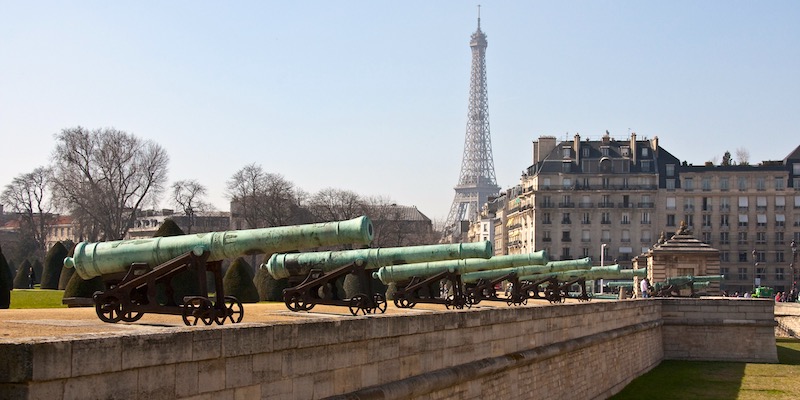 Cannons in front of Les Invalides with the Eiffel Tower nearby, photo by Mark Craft
Cannons in front of Les Invalides with the Eiffel Tower nearby, photo by Mark Craft
Bring your war-history aficionados to the museum. It's crammed with objects relating to French military history from the Middle Ages to the 20th century, including suits of armor, historic uniforms, sabres, swords, paintings, photographs, and sculptures.
The museum is divided into several areas — Ancient Armour and Arms (8th to 17th century), Louis XIV to Napoleon III (1643 to 1870), The Two World Wars (1871 to 1990), French Classical Cannons, and the Charles de Gaulle Historical Center.
Launched in 1905, the museum holds one of the most prestigious collections of military and art history in the world. One of the treasures is Jean-Auguste Ingres' painting, Napoleon on His Imperial Throne (1806). In it, Napoleon wears a splendid purple velvet robe decorated with golden bees. On his head, he wears a golden wreath and he holds Charlemagne's scepter.
Also of interest is the Musée des Plan-Reliefs (relief maps), featuring precise miniature models — made during the reign of Louis XIV and Napoleon III — of 17th- and 18th-century French fortified castles, cities, and towns . At the time, they were made to help with defensive artillery planning. The three-dimensional display is a bit hard to find. Head to the fourth floor of Les Invalides building.
![]()
The Main Courtyard at Les Invalides
Sixty bronze cannons, the jewels of the French artillery collection, are proudly displayed in the main courtyard. Trace 200 years of history and learn how the equipment was manufactured. The first of these French classical cannons were developed in 1666 and were used in sieges during the wars of Louis XIV and were virtually unchanged until 1764.
![]()
|
Trade Paris bustle for royal grandeur on a guided Versailles tour. Skip the lines, wander the gardens, and peek inside Marie Antoinette’s private estate. History never looked this good. |
|
Trade Paris bustle for royal grandeur on a guided Versailles tour. Skip the lines, wander the gardens, and peek inside Marie Antoinette’s private estate. History never looked this good. |
The Tomb of Napoleon Bonaparte
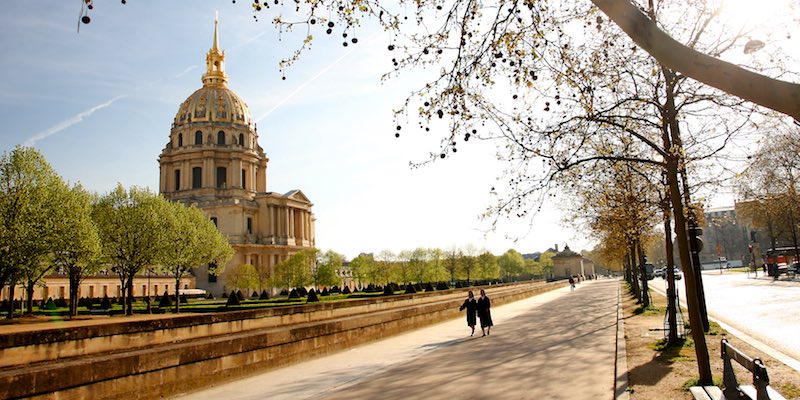 The dome above the Tomb of Napoleon Bonaparte
The dome above the Tomb of Napoleon Bonaparte
The royal chapel and dome, called l'église du dome was built in the late 1600s and completed in 1706 by architect François Mansart (considered the most important architect of his time). It's one of the most recognized domes in all of France. From the exterior, admire the Doric and Corinthian columns and statues of Charlemagne. Beneath the dome is the restored fresco of St Louis handing his sword to Christ.
In 1841, twenty years after his death, Napoleon's remains were returned from St Helena to Paris. It would be another twenty years before he was entombed in the crypt in the chapel at Les Invalides. But, he isn't alone. Buried next to him are his brothers Jerome and Joseph, and his son, Napoleon II. "Franz", as his son was called, died in Vienna of influenza in 1832 at the age of twenty-one. In 1940, Adolph Hitler of all people ordered Franz's remains to be returned to Les Invalides in Paris. They returned everything except his heart and intestines, which remain in Austria. But we digress.
Napoleon's Legacy
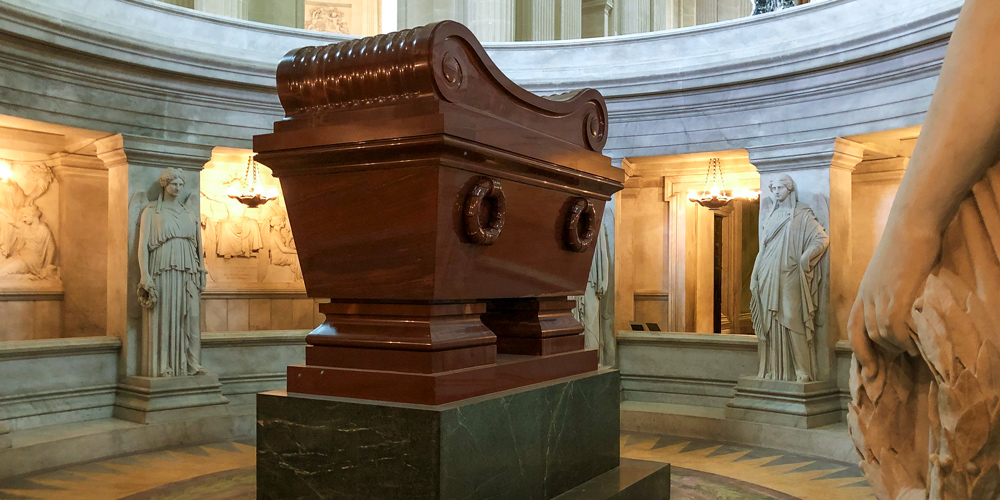 The sarcophagus of Napoleon Bonaparte, photo by Mark Craft
The sarcophagus of Napoleon Bonaparte, photo by Mark Craft
Take note of the twelve Victory statues around Napoleon's sarcophagus. They are by Swiss sculptor Jean-Jacques Pradier and symbolize Napoleon's military campaigns. Eight of his victories are inscribed into the marble floor and ten bas-reliefs herald his civilian achievements.
In case your Napoleonic history is rusty, those achievements include a civil code, the Legion of Honor, large-scale works, a commercial code, court of audit, University of France, Council of State, pacification of the nation, administrative centralization, and Concordat (a treaty between the Vatican and secular government). No wonder it's been said the Napoleon was "the most competent human who ever lived."
The Charles de Gaulle Historical Center
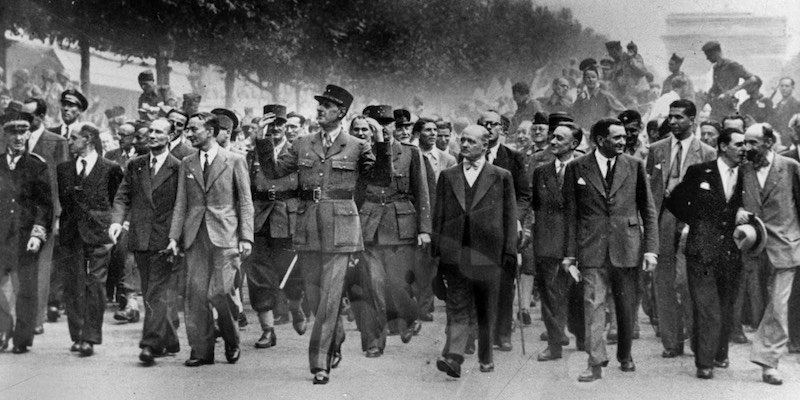 General de Gaulle on his famous walk during the Liberation of Paris in 1944
General de Gaulle on his famous walk during the Liberation of Paris in 1944
Immerse yourself in the history and life of Charles de Gaulle with hundreds of audiovisual displays — news sources, posters, photographs, along with films and interviews. You can trace his achievements from leader of Free France (1940 to 44),to the Provisional Government of the French Republic (1944 to 46), to President of France 1958 to 1969. You'll see why de Gaulle is considered by many the greatest Frenchman of all time — Le Plus Grand Français de Tous les Temps. (But, what about Napoleon?)
Tomb of Napoleon & Invalides Semi-Private Tour
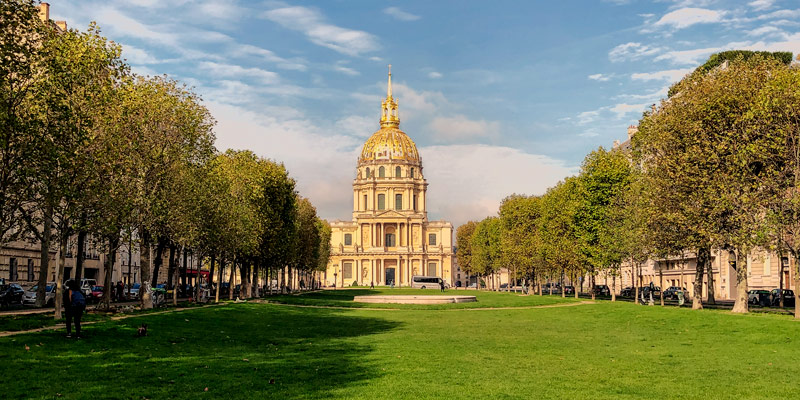 The Tomb of Napoleon seen from Avenue de Breteuil, photo by Mark Craft
The Tomb of Napoleon seen from Avenue de Breteuil, photo by Mark Craft
This semi-private tour takes you back in time to experience some of the most exciting events in French military history. For two hours you are immersed in the past from Louis XIV to Napoleon to World War Two. Also available as a private tour.
![]()
|
Browse our hand-picked Paris hotel deals with real-time discounts of up to 20%. Stay in the Marais, Saint Germain, the Latin Quarter, the Left Bank near the Eiffel Tower… every arrondissement is on the list. |
|
Browse our hand-picked Paris hotel deals with real-time discounts of up to 20%. Stay in the Marais, Saint Germain, the Latin Quarter, the Left Bank near the Eiffel Tower… every arrondissement is on the list. |
Les Invalides Paris Resources
- 129 Rue de Grenelle
- 7th Arrondissement
- Daily from 10 to 5. Late nights Tuesdays, until 9 (seasonally)
- The museums are closed the first day of each month and December 25th.
- The Charles de Gaulle Center is closed Mondays.
- There is a gift store, a bookstore, and a new restaurant/bar on the premises at the south entrance.
- Metro – Invalides, La Tour-Maubourg, Varenne
- RER – Line C, Invalides
- It's a seven-minute walk from the Eiffel Tower to Les Invalides
- Les Invalides Information in English…
Paris Planning Guides
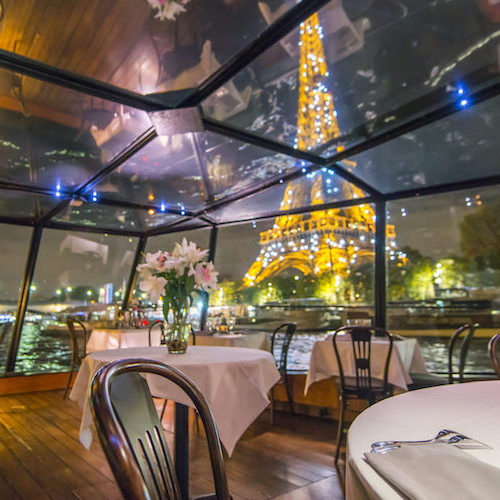 Glorious Dinner Cruises
Glorious Dinner Cruises |
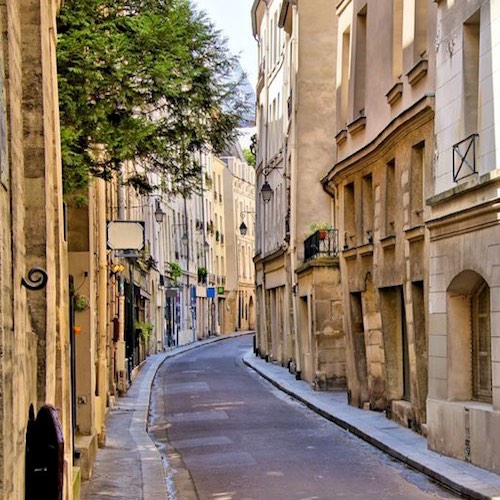 Latin Quarter Guide
Latin Quarter Guide |
 Book an Airport Transfer
Book an Airport Transfer |
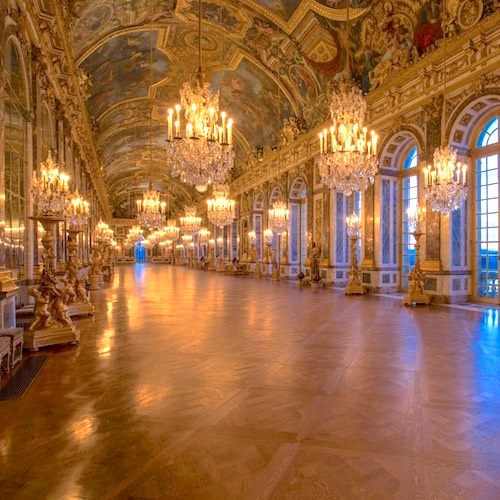 Visiting Versailles
Visiting Versailles |
